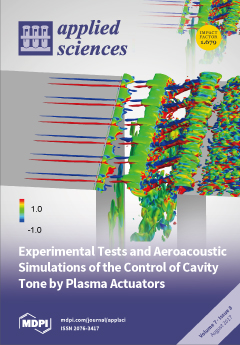Laser-induced damage on fused silica optics remains a major issue that limits the promotion of energy output of large laser systems. Subsurface impurity defects inevitably introduced in the practical polishing process incur strong thermal absorption for incident lasers, seriously lowering the laser-induced damage
[...] Read more.
Laser-induced damage on fused silica optics remains a major issue that limits the promotion of energy output of large laser systems. Subsurface impurity defects inevitably introduced in the practical polishing process incur strong thermal absorption for incident lasers, seriously lowering the laser-induced damage threshold (LIDT). Here, we simulate the temperature and thermal stress distributions involved in the laser irradiation process to investigate the effect of impurity defects on laser damage resistance. Then, HF-based etchants (HF:NH
4F) are applied to remove the subsurface impurity defects and the surface quality, impurity contents and laser damage resistance of etched silica surfaces are tested. The results indicate that the presence of impurity defects could induce a dramatic rise of local temperature and thermal stress. The maximum temperature and stress can reach up to 7073 K and 8739 MPa, respectively, far higher than the melting point and compressive strength of fused silica, resulting in serious laser damage. The effect of impurity defects on laser damage resistance is dependent on the species, size and spatial location of the defects, and CeO
2 defects play a dominant role in lowering the LIDT, followed by Fe and Al defects. CeO
2 defects with radius of 0.3 μm, which reside 0.15 μm beneath the surface, are the most dangerous defects for incurring laser damage. By HF acid etching, the negative effect of impurity defects on laser damage resistance could be effectively mitigated. It is validated that with HF acid etching, the number of dangerous CeO
2 defects is decreased by more than half, and the LIDT could be improved to 27.1 J/cm
2.
Full article





